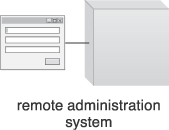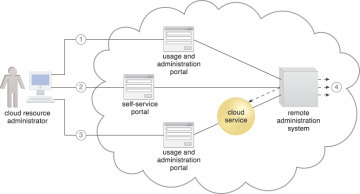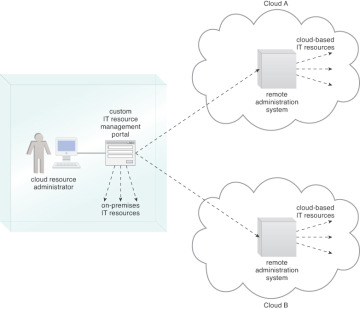Cloud Management Mechanisms
- 12.1 Remote Administration System
- 12.2 Resource Management System
- 12.3 SLA Management System
- 12.4 Billing Management System
12.1 Remote Administration System
12.2 Resource Management System
12.3 SLA Management System
12.4 Billing Management System
Cloud-based IT resources need to be set up, configured, maintained, and monitored. The systems covered in this chapter are mechanisms that encompass and enable these types of management tasks. They form key parts of cloud technology architectures by facilitating the control and evolution of the IT resources that form cloud platforms and solutions.
The following management-related mechanisms are described in this chapter:
Remote Administration System
Resource Management System
SLA Management System
Billing Management System
These systems typically provide integrated APIs and can be offered as individual products, custom applications, or combined into various product suites or multifunction applications.
12.1 Remote Administration System
The remote administration system mechanism (Figure 12.1) provides tools and user interfaces for external cloud resource administrators to configure and administer cloud-based IT resources.

Figure 12.1
The symbol used in this book for the remote administration system. The displayed user interface will typically be labeled to indicate a specific type of portal.
A remote administration system can establish a portal for access to administration and management features of various underlying systems, including the resource management, SLA management, and billing management systems described in this chapter (Figure 12.2).

The remote administration system abstracts underlying management systems to expose and centralize administration controls to external cloud resource administrators. The system provides a customizable user console, while programmatically interfacing with underlying management systems via their APIs.
The tools and APIs provided by a remote administration system are generally used by the cloud provider to develop and customize online portals that provide cloud consumers with a variety of administrative controls.
The following are the two primary types of portals that are created with the remote administration system:


Usage and Administration Portal – A general-purpose portal that centralizes management controls to different cloud-based IT resources and can further provide IT resource usage reports. This portal is part of numerous cloud technology architectures covered in Chapters 13 to 15.
Self-Service Portal – This is essentially a shopping portal that allows cloud consumers to search an up-to-date list of cloud services and IT resources that are available from a cloud provider (usually for lease). The cloud consumer submits its chosen items to the cloud provider for provisioning. This portal is primarily associated with the rapid provisioning architecture described in Chapter 14.
Figure 12.3 illustrates a scenario involving a remote administration system and both the usage and administration and self-service portals.

A cloud resource administrator uses the usage and administration portal to configure an already leased virtual server (not shown) to prepare it for hosting (1). The cloud resource administrator then uses the self-service portal to select and request the provisioning of a new cloud service (2). The cloud resource administrator then accesses the usage and administration portal again to configure the newly provisioned cloud service that is hosted on the virtual server (3). Throughout these steps, the remote administration system interacts with the necessary management systems to perform the requested actions (4).
Depending on:
the type of cloud product or cloud delivery model the cloud consumer is leasing or using from the cloud provider,
the level of access control granted by the cloud provider to the cloud consumer, and
which underlying management systems the remote administration system interfaces with,
…the following tasks can commonly be performed by cloud consumers via a remote administration console:
configuring and setting up cloud services
provisioning and releasing IT resource for on-demand cloud services
monitoring cloud service status, usage, and performance
monitoring QoS and SLA fulfillment
managing leasing costs and usage fees
managing user accounts, security credentials, authorization, and access control
tracking internal and external access to leased services
planning and assessing IT resource provisioning
capacity planning
While the user interface provided by the remote administration system will tend to be proprietary to the cloud provider, there is a preference among cloud consumers to work with remote administration systems that offer standardized APIs. This allows a cloud consumer to invest in the creation of its own front-end with the foreknowledge that it can reuse this console if it decides to move to another cloud provider that supports the same standardized API. Additionally, the cloud consumer would be able to further leverage standardized APIs if it is interested in leasing and centrally administering IT resources from multiple cloud providers and/or IT resources residing in cloud and on-premises environments (Figure 12.4).

